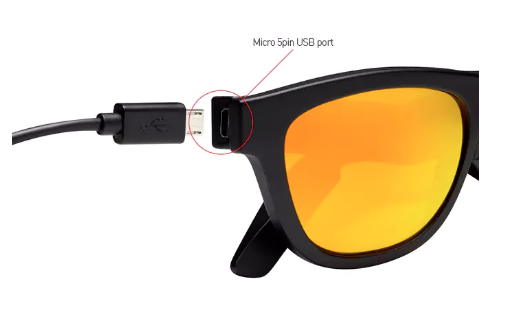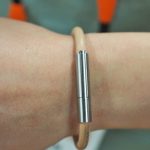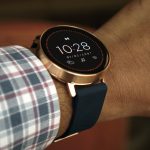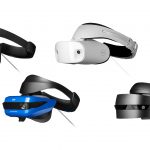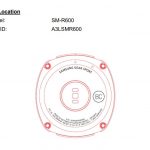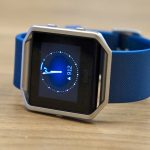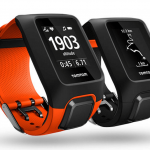Has bone conduction has returned to wearables?
Has bone conduction returned to wearables?

With the old adage everything old is new again, this certainly seems to be the case for phenomenon bone conduction. Once the darling of hearing aids, it began to show up in the consumer headphone market in the early 2000s. During this time, bone conduction headphones were marketed as safer for long-term hearing than their standard counterparts.
Since then, the technology has only really begun to make its presence known again over the last few years. In simple terms, bone conduction enables you to hear sound through the vibration of the bones of your face — usually the jaw bones and cheek bones. The sound waves are bypassing the outer and middle ear where the eardrum is located, and directly stimulating the inner ear which is our actual “hearing organ.”
See also: Seniors getting helping hand from wearables
As well as hearing aids and headphones, the technology has also been attributed to Beethoven’s ability to write music — even while hearing-impaired — through biting down on his composer’s wand that was touching the piano.
Here are a few of the devices that are embedding the technology into wearable devices:
Sgnl
If you’ve ever had a hankering to be James Bond, your dreams can now become a reality.
Innomdle Lab, the first company ever to officially spin off from Samsung Electronics have created Sgnl, a smart strap that enables users to engage in phone conversations simply by placing their finger to their ear. Whether attached to a classic watch or a smart watch, users can enable fingertip communication and a number of additional smart functions simply by replacing the watch strap. Additional smart functions include Call Reminders, Fitness Tracker and Smart Alert.
Sgnl’s key technology lies in its patented Body Conduction Unit (BCU), which is capable of transmitting vibrations through the body, which then can be converted to sound. Sgnl communicates with the user’s phone through Bluetooth, and when a voice signal is received, Sgnl will generate vibrations through its BCU.
These vibrations will be sent through the users’ hand to their fingertip. When users place their fingertip to their ear, the vibration echoes to create amplified sound within the closed space of their ear and they can speak through the microphone embedded in the Sgnl strap. Overall, very appealing.
Zungle sunglasses

Did you know you can now listen to music through your sunglasses? Well not just any sunglasses but a pair created by Zungle containing bone conduction. These sunglasses enable the wearer to listen to music and answer telephone calls as they can be paired with a smart phone through wireless Bluetooth and a noise-cancelling microphone that lets you make and answer calls. They are chargeable via a hidden USB port.
Zungle have received over $ 1.9 million in funding via Kickstarter, having asked for an initial $ 50,000.
Invisio Headsets

Whilst not traditionally a general consumer product, bone conduction headsets are popular in military and police occupations. The headsets are configured to work with both analog and digital radios and can be adapted to work with push-to-talk awitches. They include Kevlar-woven cables for added durability, unique whisper capability, the ability to work under eyewer or gas masks and also the ability to clearly communicate in high noise environments.
Google Project Aura

The original Google Glass utilized bone conduction audio, meaning nothing needed to be placed inside the ear. This resulted in a more comfortable headset as well as great situational awareness through being still able to hear. Since Google Glass went rather quiet the division responsible, Project Aura whilst scarce in offering information is believed to be continuing their interest in bone conduction technology.
Marlin GPS Swim Meter

Marlen is a wearable device by Hong Kong based start-up Playtsens for swimmers. The wearable is attached to the user goggle strap at the back of the head and the second piece to the ear piece and it sends you voice feedback using a bone conduction headset, even when underwater. Your pace is reported to you as you swim with no disruption to your swim stroke.
In open water swims, your swim performance is captured with GPS. In the pool, motion sensors are used when there is no GPS reception. After your swim, you can connect Marlin to your phone with Bluetooth to review your data and update configurations.
It’ll be interesting to see how other wearables incorporate bone conduction. It would be easy to imagine some of these examples employed in traditionally noisy settings such as factories and warehouses. It’s also foreseeable that hearing devices and technology becomes more responsive and customizable as our rapidly aging popular sees a decrease in their hearing quality and clarity.
While previous generations may have been content to suffer from poor sound quality, our connected generations are more likely to look to technology to solve the problem.
The post Has bone conduction has returned to wearables? appeared first on ReadWrite.
(94)

